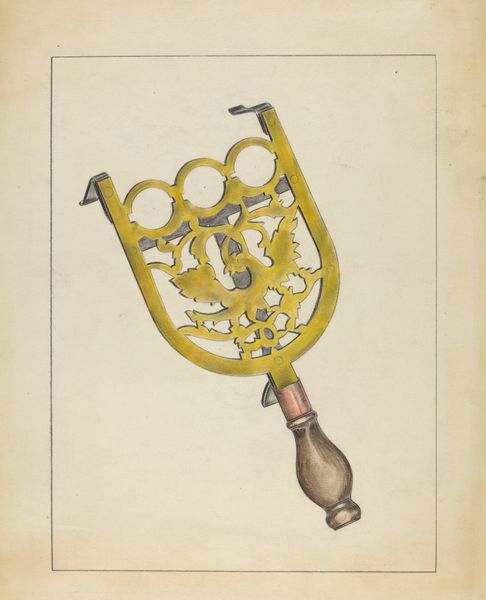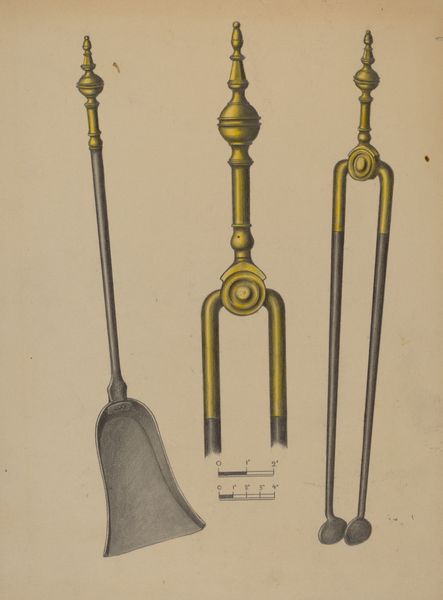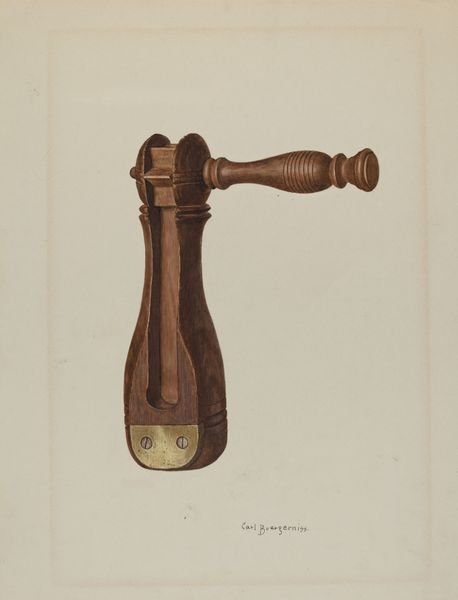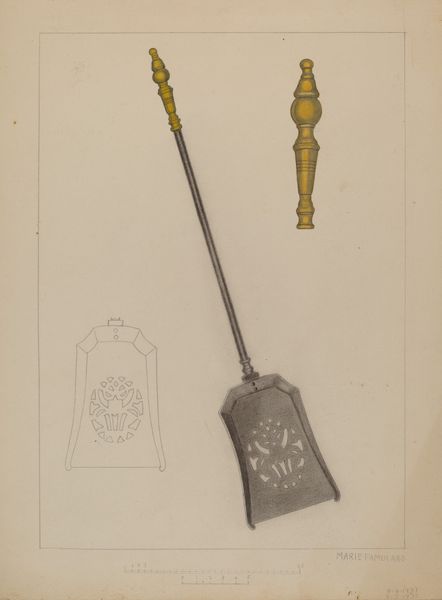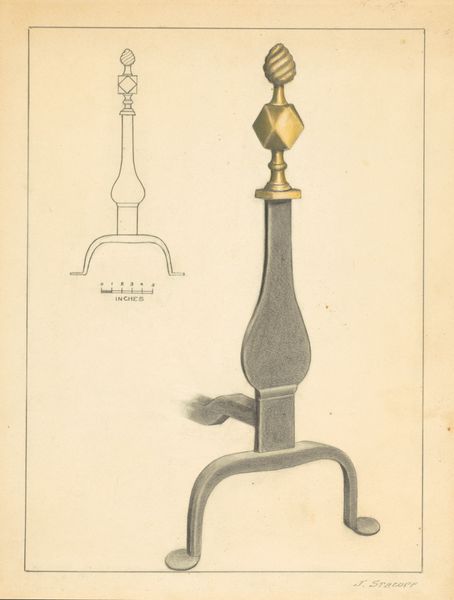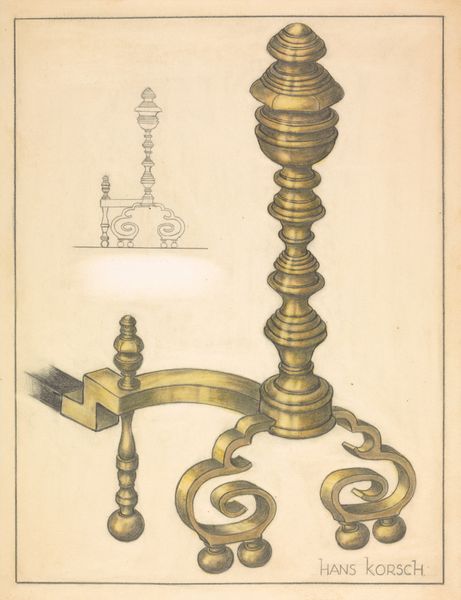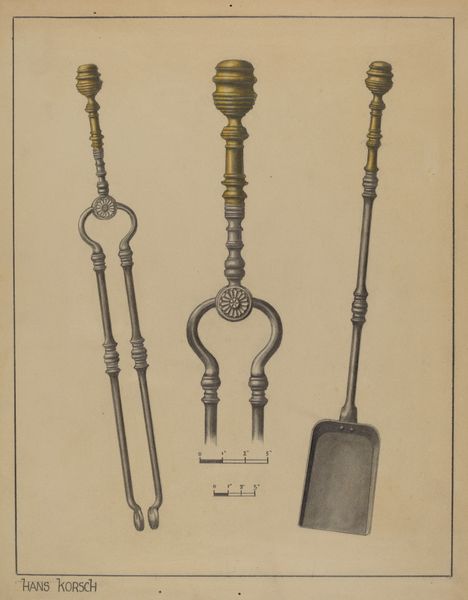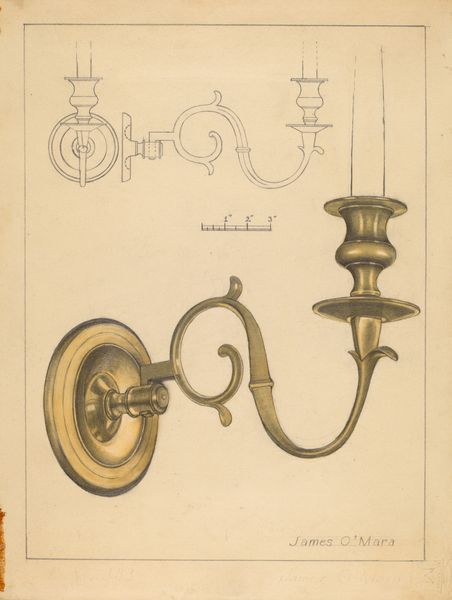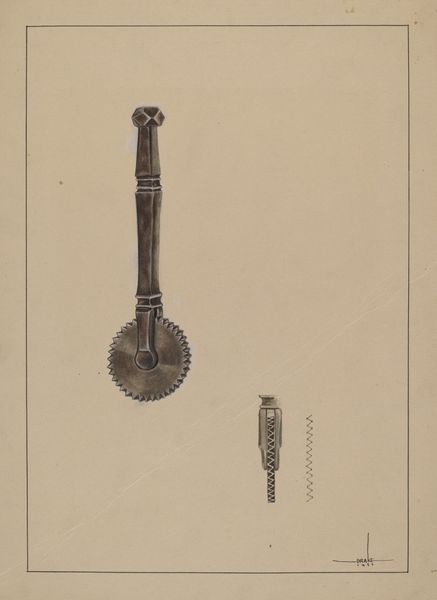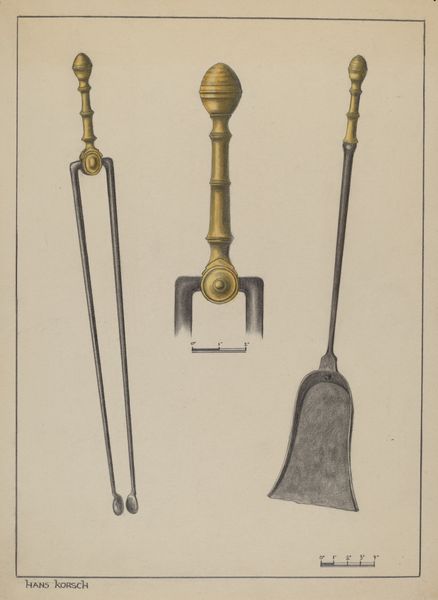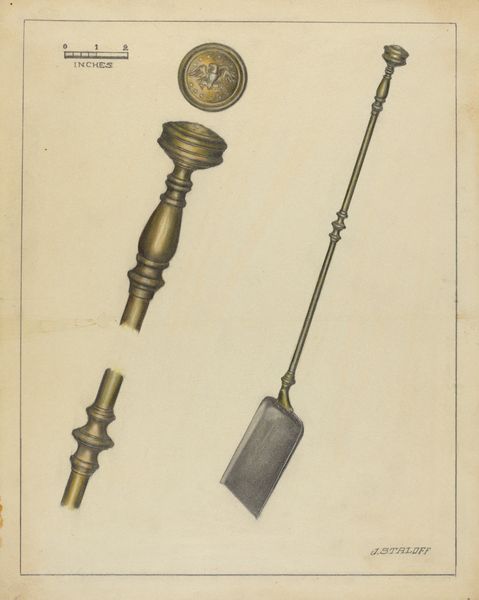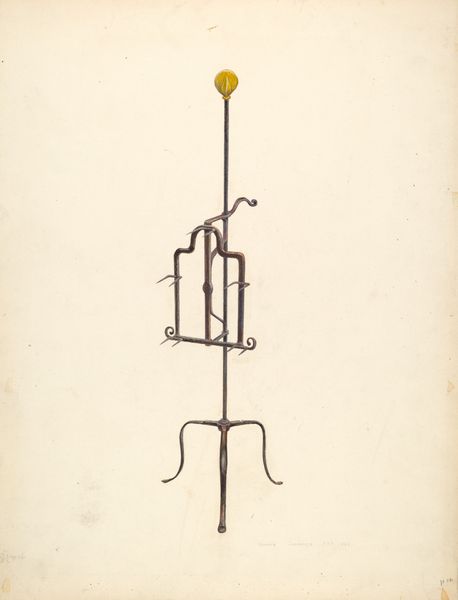
drawing, pencil
#
drawing
#
pencil
#
watercolour illustration
#
academic-art
#
watercolor
Dimensions: overall: 29.5 x 22.4 cm (11 5/8 x 8 13/16 in.)
Copyright: National Gallery of Art: CC0 1.0
Curator: We're looking at "Trivet," a drawing rendered circa 1939 by Benjamin Resnick, using pencil, and likely watercolor, according to some analyses. This academic piece seems straightforward but what resonates with me is the image itself. Editor: You know, the first thing that struck me about it is its charming stillness. Like a quiet observer in a busy kitchen from a bygone era. There's a humble beauty in depicting such an ordinary object with such care. Curator: It's a design, too. This elevates something pedestrian, drawing our attention to the beauty in functionality. Given the late 1930s date, we might read into this an urge toward celebrating American industrial design amidst economic hardship and escalating global tensions. Think of it as a populist uplift, imbuing daily life with artistry. Editor: That’s so interesting. I was also contemplating the craftsmanship itself. You have two renderings within the drawing—almost like plans on different scales that allow you to appreciate the design, the handle, the animal design. Curator: Precisely! The doubling effect not only showcases detail but implicitly speaks to design processes, a subtle gesture that foregrounds the intentionality behind mundane objects. In a world increasingly reliant on mass production, it is also worth discussing how this approach to rendering insists on handcraft and an awareness of how objects were once, and could be again, conceived and constructed. Editor: And isn't there a little wink in choosing something so commonplace as art itself? As if Resnick is nudging us to see artistry everywhere, blurring the line between practical object and objet d'art. There's something deliciously subversive in that. I wonder how many of us would ever elevate a trivet to this level of meticulous, almost loving, representation. Curator: It seems we converge upon appreciating the artist's eye for detail within utilitarian realms, and I also appreciate your playful nod to the trivet's intrinsic "ordinariness". A piece like this invites us to ask not just *what* is deemed worthy of artistic attention, but *why*. It reveals so much about the artist and about the society in which the artist existed. Editor: It seems simple enough, but you know, getting up close like this, you really start to consider these things differently!
Comments
No comments
Be the first to comment and join the conversation on the ultimate creative platform.
